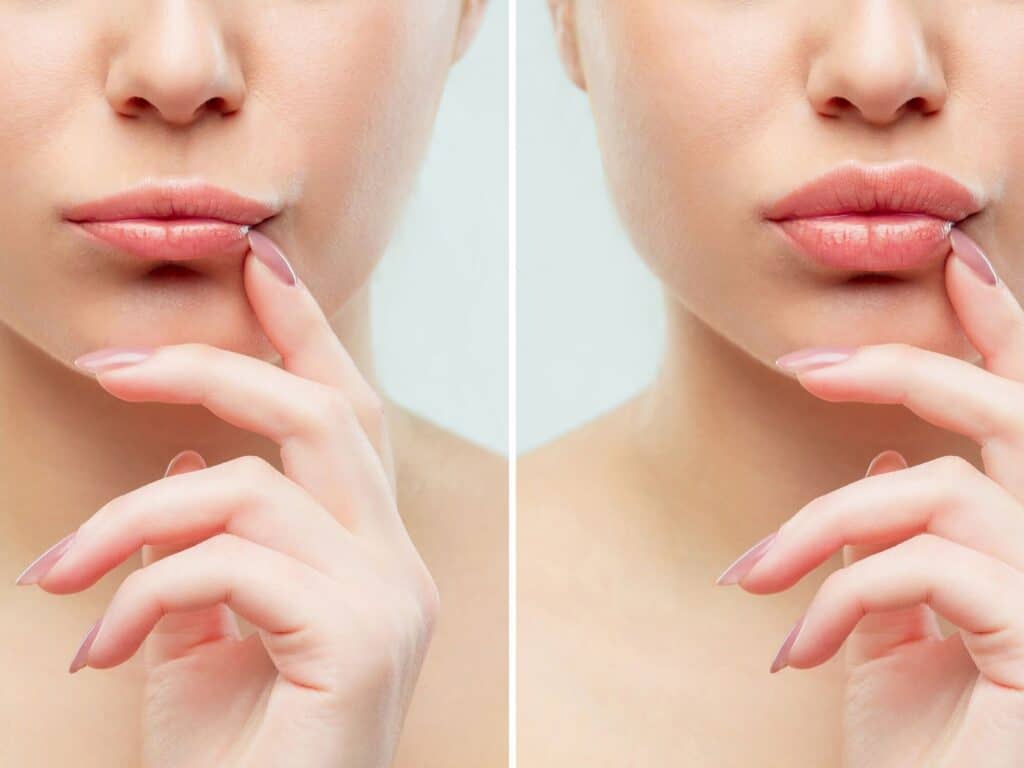First 24 Hours Post-Op
Initial Response
In the first day following liposuction, a plastic surgery procedure, significant swelling and bruising, side effects of the treatment, appear in the treated areas. Patients are advised to wear compression garments to aid in recovery time. These are common side effects and reactions, such as bruising, as the body starts to heal, marking the recovery time of a successful recovery process. The affected area may feel tender, show bruising, and look noticeably different due to the residual swelling from traditional liposuction results, indicating a successful recovery process.
Patients must follow their surgeon’s post-operative instructions closely. This includes taking prescribed medications to manage pain, reduce itching, and bruising in the affected area, and reduce the risk of infection for a successful recovery process. Bed rest for a week is often recommended to allow the body time, key takeaway being days of recovery from bruising. Fluid intake should be increased after traditional liposuction to help reduce swelling, bruising, and flush out toxins for better liposuction results by cleansing the cells.
Recovery Care
Monitoring for complications is crucial during this period. Key takeaway: Signs of concern include excessive pain, unusual discharge, bruising, or fever, days after the procedure. These bruising issues, appearing in clients over days or a week, could indicate an infection or other issues requiring immediate medical attention.
Applying ice packs can help manage swelling and bruising for liposuction clients but should be done according to medical advice, ideally several times a day for a week, to avoid damaging the tissue. Compression garments may also be advised for clients post-liposuction to support the healing process, minimize swelling further, and be worn day and night for a week.
Healing Process
The body’s healing mechanism kicks into high gear, working around the clock, day and night, to repair tissues disturbed by traditional liposuction for clients. It’s a gradual process, with improvements seen as days pass. However, patients and clients should not expect instant results since full recovery from liposuction takes time, often beyond a day.
Weeks 1-4 Healing Stages
Swelling Decrease
The first week after liposuction, patients often see significant swelling and bruising, starting from day one. This is the body’s natural response to the procedure. However, as days pass into weeks, these symptoms gradually start to lessen. By the end of the fourth week, most individuals notice a noticeable decrease in swelling and bruising from liposuction, day by day. This reduction reveals the initial results of the liposuction.
Gentle movements become crucial during this period. Light walking is highly encouraged after liposuction as it promotes blood circulation without putting too much strain on the healing tissues.
Activity Limitation
It’s important for patients to understand their physical limits during these first few weeks after liposuction. Strenuous activities should be off-limits. They can cause increased swelling or even lead to complications in the healing process after liposuction.
Direct sun exposure is another concern. Treated areas are more susceptible to sunburn and pigmentation changes if not properly protected. Patients should cover up or use strong SPF when going outdoors.
Itching Management
As the body heals from liposuction, some patients might experience itching around treated areas. This is a common part of the healing process due to skin regeneration and should not cause alarm. Keeping the skin moisturized can help manage this discomfort but avoid applying pressure or scratching the area.
Pain Management Strategies
Medication Use
Following the initial healing stages, pain management becomes a focal point. It’s crucial to use prescribed pain medication as directed by your surgeon after liposuction. This not only helps in controlling discomfort but also aids in a smoother recovery process after liposuction.
Patients should adhere strictly to the dosage instructions. Overuse can lead to complications, while underuse might result in unnecessary pain.
Cold Compresses
Applying cold compresses is another effective strategy for reducing swelling and alleviating discomfort. This method is particularly beneficial during the first few weeks post-liposuction surgery.
For optimal results, apply cold compresses for 20 minutes at a time. Ensure there’s a cloth between the skin and the ice pack to prevent frostbite.
Relaxation Techniques
Engaging in relaxation techniques can significantly impact how pain is perceived. Techniques such as deep breathing or meditation have proven effective for many patients.
These methods not only help in managing pain but also improve overall well-being during recovery. They can be practiced anywhere, making them highly accessible.
Importance of Compression Garments
Continuous Wear
Wear compression garments continuously after liposuction. They play a crucial role in the healing process. These garments help reduce swelling and shape your body post-surgery, especially after liposuction.
Patients should keep these garments on as much as possible during the first few weeks after liposuction. This constant pressure aids in faster recovery and better results.

Proper Fit
Ensure your garment fits properly. A too tight garment can cause discomfort or skin irritation, while a loose one won’t provide enough support.
Consult with your surgeon to get the right size. They can recommend the best type for your specific needs.
Gradual Reduction
Gradually decrease wear compression based on your surgeon’s advice. As you heal, you’ll need less support from the garment.
Typically, surgeons suggest wearing it less frequently after the first month. Listen to their guidance for optimal results.
Weeks 5-8 Mid-Stage Recovery
Swelling Reduction
By weeks 5 to 8, individuals often notice a significant reduction in swelling. This stage marks an important phase in the recovery time, where the outcomes of the procedure become more apparent. The successful recovery process is evident as discomfort lessens and normalcy returns.
Patients can now appreciate the initial glimpses of their new contours. The body starts to reveal a more defined shape, aligning with the expectations set before the procedure. It’s crucial, however, to continue wearing compression garments as advised to support these evolving results.
Activity Increase
As comfort improves, incorporating more physical activities becomes feasible. Walking and light exercises are encouraged to promote circulation and aid healing. Yet, it’s vital to remain cautious of overexertion. Pushing too hard can lead to setbacks in the recovery process.
Listening to one’s body is key during this time. Activities should not cause discomfort or pain. Adjustments based on personal tolerance ensure a smooth transition back to regular exercise routines.
Contour Clarification
The fading of bruises and further reduction in swelling allows for a clearer view of the liposuction results. Patients begin to see more defined contours and an improved body shape. This progress brings excitement and satisfaction, as the visual changes align with personal aesthetic goals.
Approaching Final Results in Weeks 9-12
Swelling Reduction
By now, swelling should be substantially reduced, revealing changes that are much closer to the final results. Most individuals notice a significant difference in their body shape. It’s thrilling to see the contours becoming more defined each week.
Patients often feel more comfortable in their skin as the majority of the swelling subsides. They start to enjoy the outcomes of their procedure, fitting better into clothes and noticing a more sculpted physique.
Follow-Up Consultations
Evaluating the need for follow-up consultations becomes crucial during this phase. These meetings allow both patient and surgeon to discuss progress and address any concerns.
It’s an opportunity to ask questions about the recovery process or express any worries. The surgeon can provide reassurance, adjust recovery plans if necessary, and ensure everything is on track for optimal results.
Resuming Activities
Patients can generally start to resume normal activities and exercise routines after getting medical clearance. This marks a significant milestone in recovery, signifying not just physical healing but also a return to daily life and routines.
Gradual reintroduction of physical activity helps strengthen the body and improve overall well-being. However, it’s important to listen to your body and avoid pushing too hard, too fast.
Maintaining Progress with Healthy Habits
Balanced Diet
A balanced diet plays a crucial role in keeping the liposuction results intact. It’s not just about losing fat; it’s about maintaining that loss. After shedding stubborn fat through lipo, introducing more fruits, vegetables, and lean proteins into your diet can help.
Patients should limit processed foods and sugars. These can lead to weight gain, affecting the sleek contour achieved.
Regular Exercise
Physical activity is essential after liposuction. It helps in tightening the skin and maintaining muscle tone. Clients often wonder when they can resume exercise. Most can start light activities within a few weeks post-operation.
Gradually increasing intensity ensures safety and effectiveness. This approach aids in sustaining the results long-term.
Hydration and Lifestyle
Staying hydrated is key for recovery and maintenance. Water helps flush out toxins, supporting overall health.
Avoiding smoking and excessive alcohol consumption is also vital. These habits can hinder healing and affect the final outcome of the procedure.
Professional Guidance
etimes, people need extra support to maintain their new figure. Consulting a nutritionist or personal trainer offers personalized advice tailored to individual needs.
They can provide realistic expectations and a structured plan to follow. This guidance is invaluable for those looking to make lasting changes.
Risks and Complications Overview
Infection Risk
After liposuction, the body becomes more vulnerable to infections. This is a serious concern that requires immediate attention. If not treated promptly, infections can lead to more severe health issues.
Patients should watch for signs of infection around the operation site. These include redness, swelling, or unusual discharge. They must follow their surgeon’s instructions on wound care to minimize this risk.
Seroma Formation
Seromas are pockets of fluid that can form under the skin after surgery. They often occur when blood vessels are disrupted during the operation. While not always harmful, seromas can cause discomfort and may need to be drained by a healthcare professional.
It’s crucial for patients to report any unusual swelling or fluid accumulation to their surgeon. This allows for timely intervention and prevents complications.
Uneven Contours
One key takeaway from liposuction is the potential for uneven contours or asymmetry in the treated areas. This issue might stem from uneven fat removal or the body’s healing response.
Patients should have realistic expectations and understand that perfection is not guaranteed. In some cases, additional treatments or corrective surgery may be necessary to achieve desired results.
Final Remarks
Navigating through the liposuction recovery timeline, you’ve seen the ups and downs from the first 24 hours to the final stretch at 12 weeks. It’s a journey of patience, care, and commitment. Understanding what each week might bring—from swelling and pain to gradually unveiling your new contours—helps set realistic expectations. Remember, wearing compression garments and sticking to healthy habits aren’t just recommendations; they’re crucial steps towards ensuring your results last.
Now, it’s over to you. Armed with knowledge on managing pain, the importance of compression garments, and how to maintain your progress, you’re ready to tackle this recovery head-on. Keep these insights close as you move forward. And if you ever feel lost or unsure, remember that reaching out to your surgeon is key. Ready for a transformation? Let’s make those results stick. Dive deeper into our resources or schedule a consultation today.
Frequently Asked Questions
What can I expect in the first 24 hours after liposuction?
You’ll experience swelling, bruising, and discomfort. It’s crucial to rest and follow your surgeon’s care instructions closely.
How does the healing process evolve from weeks 1 to 4?
During this period, swelling and bruising decrease significantly. You’ll start to see some changes in your body shape as you heal.
What pain management strategies are effective post-liposuction?
Over-the-counter pain relievers and prescribed medications can manage pain effectively. Follow your surgeon’s advice for the best results.
Why are compression garments important after liposuction?
Compression garments reduce swelling, support recovery, and help shape your body by ensuring skin adheres to underlying tissues.
What happens during weeks 5 to 8 of liposuction recovery?
Recovery progresses with reduced swelling and more visible contouring results. It’s essential to continue wearing compression garments as advised.
When will I see the final results of my liposuction?
Final results are typically visible between weeks 9 and 12, once most swelling has subsided and your body has adjusted.
How can I maintain my liposuction results?
Maintain a healthy lifestyle with balanced nutrition and regular exercise to preserve your new shape.
What are some common risks and complications of liposuction?
Common risks include infection, bleeding, uneven contours, or changes in skin sensation. Following post-op instructions reduces these risks significantly.










